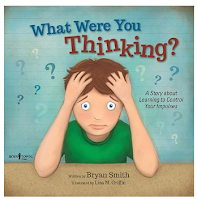Teaching Respect: Building a Foundation for Positive Character Development
Respect is a cornerstone of character education, essential for creating a harmonious and supportive classroom environment. When students learn to respect themselves, their peers, and their surroundings, they are better equipped to thrive academically and socially. Here are some friendly tips for teachers to foster respect in their classrooms.
1. Lead by Example
Your actions speak louder than words. Show respect in your interactions with students, colleagues, and parents. Demonstrate active listening, maintain a positive attitude, and address conflicts calmly and fairly. Your behavior sets a powerful example for your students to follow.
2. Create a Respectful Classroom Culture
Establish clear expectations for respectful behavior from the beginning of the school year. Collaborate with your students to create a classroom charter or set of rules that emphasize respect for oneself and others. Display these rules prominently and refer to them regularly to reinforce their importance.
3. Use Literature to Highlight Respect
Incorporate books and stories that emphasize respect into your reading curriculum. Choose stories that showcase characters demonstrating respect in various situations. After reading, engage your students in discussions about the characters' actions and how they can apply these lessons in their own lives.
Book List:
I have used this book for many years in the classroom. It is especially impactful when teaching Pre-K or preschool. It has simple scenarios that are relevant to children. In the back of the text there are activities to reniforce the skill.
Buy on AMAZON at: Respect and Take of Things
 What If Everybody Did That? What if everybody broke the rules…and spoke during story time, didn’t wash up, or splashed too much at the pool? Then the world would be a mess. But what if everybody obeyed the rules so that the world would become a better place? Using humorous illustrations rendered in mixed media, these questions are answered in a child-friendly way and show the consequences of thoughtless behavior."
What If Everybody Did That? What if everybody broke the rules…and spoke during story time, didn’t wash up, or splashed too much at the pool? Then the world would be a mess. But what if everybody obeyed the rules so that the world would become a better place? Using humorous illustrations rendered in mixed media, these questions are answered in a child-friendly way and show the consequences of thoughtless behavior." Crayons on Strike: A Funny, Rhyming, Read Aloud Kid's Book About Respect and Kindness for School Supplies: "The crayons come alive in this funny story about respect and kindness towards school supplies!" Buy on AMAZON at: Crayons on Strike
Role-playing is a great way to teach respect through experiential learning. Create scenarios where students can practice respectful communication, conflict resolution, and empathy. These activities help students understand different perspectives and develop essential social skills.
5. Celebrate Respectful Behavior
Acknowledge and celebrate acts of respect in your classroom. Use a reward system, such as a 'Respect Star' chart, to recognize students who consistently demonstrate respectful behavior. Celebrate individual and group achievements to reinforce the value of respect and build a positive classroom community.
6. Teach Active Listening
Respectful communication begins with active listening. Teach your students the importance of listening attentively when others are speaking. Practice active listening skills through partner activities, group discussions, and listening games. Emphasize the importance of eye contact, nodding, and responding thoughtfully.
7. Promote Empathy and Understanding
Encourage your students to understand and appreciate diverse perspectives. Use activities like 'circle time' to share personal experiences and discuss feelings. Teach empathy by exploring different cultures, traditions, and backgrounds. This helps students develop respect for others' viewpoints and experiences.
8. Address Disrespectful Behavior Promptly
When disrespectful behavior occurs, address it promptly and constructively. Use these moments as teaching opportunities to discuss the impact of such behavior and how it can be corrected. Encourage students to reflect on their actions and consider how they can make amends.
9. Involve Families in Teaching Respect
Extend your efforts beyond the classroom by involving families in teaching respect. Share your classroom goals and strategies for fostering respect with parents. Provide resources and suggestions for reinforcing respectful behavior at home. A consistent approach between home and school strengthens the message.
10. Reflect and Adapt Your Approach
Regularly reflect on your strategies for teaching respect and assess their effectiveness. Seek feedback from students, colleagues, and parents to identify areas for improvement. Be open to adapting your approach based on the needs and dynamics of your classroom.
By implementing these tips, you can create a classroom environment where respect is valued and practiced daily. Teaching respect not only enhances students' character but also contributes to a positive and inclusive learning community.
For more ideas and resources on character education, visit my blog, Lanie’s Little Learners, where I share creative, hands-on activities that promote active learning and character development. Let's work together to nurture respectful and responsible individuals who can make a positive impact in our world.
Video List:
Here are some videos found on YouTube that I use in the classroom at the beginning of the year and anytime I see unwanted behavior. I use them as a brain break as well.



